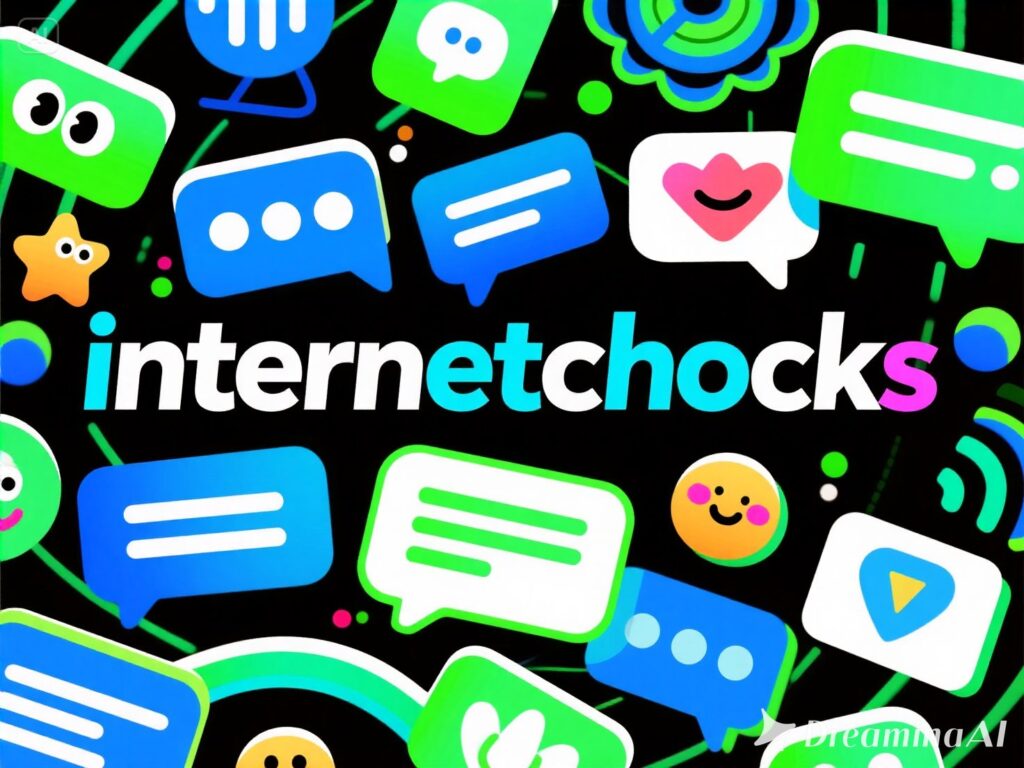Introduction
Picture this: you’re binge-watching your favorite series, halfway through a jaw-dropping scene, and suddenly — buffering. The spinning circle of doom stares right back at you. Or maybe you’re uploading that perfect selfie, but the progress bar refuses to budge. Frustrating, right? Welcome to the universe of internetchocks, the digital hiccups that make the smooth flow of our online lives come to a screeching halt.
But what exactly are internetchocks? Are they just random slowdowns, or is there something more sinister maybe even fascinating happening behind the scenes? Let’s take a deep dive into this quirky, tech-tangled world where bandwidth battles, data dances, and connections crash!
What on Earth Are Internetchocks?
The term internetchocks might sound like a made-up word and honestly, it kind of is. Think of it as a blend of “internet” and “choke,” describing the exact moment when your digital flow gets blocked, restricted, or tangled in a web of unseen chaos.
In simpler terms, internetchocks are the online equivalent of a traffic jam. Your data packets — tiny bits of digital information are cruising down the virtual highway when suddenly, bam! Congestion. Latency. Dropped connections. Everything slows to a crawl.
Common Signs You’re Experiencing an Internetchock
-
Pages taking forever to load
-
Videos buffering endlessly
-
Lag in online games (nothing’s worse than dying mid-fight because of lag)
-
Emails refusing to send
-
Streaming apps freezing mid-scene
If you’ve experienced any of these, congratulations you’ve been internetchocked!
The Science (and Chaos) Behind Internetchocks
Before you blame your Wi-Fi router, let’s peel back the layers. The internet is a vast, interconnected web a digital ecosystem of servers, cables, and signals flying across continents. When even one part of that system hiccups, the whole chain can feel it.
1. Bandwidth Bottlenecks
Imagine a four-lane highway suddenly narrowing to one. That’s what happens when too many users try to access data simultaneously. Networks simply can’t handle the load. The result? Choked speeds and a frustrated you.
2. Server Overload
When a website suddenly gets a surge of traffic think viral news, flash sales, or trending videos — its servers can’t keep up. It’s like an overbooked restaurant with too few waiters. Everyone’s shouting orders, but no one’s getting served on time.
3. Poor Routing Paths
Sometimes, your data takes a ridiculously long route across the internet. Instead of going straight from A to B, it zigzags through multiple servers — like taking the scenic route when you’re already late.
4. ISP Throttling
Internet Service Providers (ISPs) occasionally slow down certain types of traffic, especially during peak hours. Streaming, gaming, and large downloads often get hit first. So yes, that Netflix lag might be intentional.
5. Hardware Glitches
Even the best routers and modems can falter. A slight firmware bug, outdated driver, or overheating device can trigger an internetchock faster than you can say “reboot.”
The Human Side of Internetchocks
Here’s where it gets interesting. Internetchocks aren’t just about cables and code — they affect people, businesses, and even emotions.
Productivity Takes a Plunge
Remote workers know the pain. You’re in a Zoom meeting, mid-presentation, and suddenly freeze frame. Everyone’s staring at your awkward still image. Lost connection equals lost credibility.
Businesses Bleed
For e-commerce sites, every second of delay can mean lost sales. Studies show that a mere one-second lag in page load time can drop conversions by up to 7%. That’s a serious hit!
Emotional Rollercoaster
It’s funny how a tiny delay can send your blood pressure skyrocketing. Psychologists even suggest that constant connectivity issues can lead to irritability and stress. Digital calmness? Out the window.
How to Outsmart Internetchocks: Practical Fixes
Luckily, you don’t have to wave a magic wand or summon a tech wizard. There are easy, actionable steps to beat the choke and reclaim your digital freedom.
1. Check Your Speed
Use tools like Speedtest or Fast.com to see if your connection’s living up to what you’re paying for. If not, it’s time to call your provider.
2. Reboot Your Router
Classic, yet effective. Turn it off, wait 30 seconds, and turn it back on. This clears up cache clutter and resets the connection.
3. Limit Bandwidth-Hungry Apps
Streaming, large downloads, and cloud backups can hog bandwidth. Schedule heavy usage during off-peak hours.
4. Update Firmware and Drivers
Old software equals unstable performance. Keep everything from your router to your computer updated regularly.
5. Use a Wired Connection
Wi-Fi can be unpredictable. If stability matters (like during gaming or meetings), plug in an Ethernet cable for a smoother experience.
6. Opt for a Better Plan
Sometimes, it’s not you — it’s your plan. If your family streams 4K content and games simultaneously, you’ll need more bandwidth.
When Internetchocks Become a Global Issue
It’s not just your house or your neighborhood. Sometimes, internetchocks ripple across countries and even continents.
Examples of Global Internetchocks
-
Undersea Cable Damage: A ship’s anchor once sliced through an undersea internet cable near Egypt, slowing connections across Asia and Europe.
-
Cyberattacks: Massive DDoS attacks can flood servers with traffic, choking even the biggest websites like Twitter or Spotify.
-
Infrastructure Failures: A single data center failure can affect millions of users if it’s part of a major cloud network.
The interconnected nature of the internet means that even small technical issues can snowball into massive global slowdowns proving just how fragile our digital lifeline truly is.
Internetchocks and the Future of Connectivity
Here’s the silver lining: as technology evolves, so does our ability to prevent and manage internetchocks.
1. AI-Powered Traffic Management
Artificial Intelligence can now predict network congestion and reroute traffic intelligently before a slowdown happens. Think of it as Waze for the internet.
2. 5G and Beyond
The rollout of 5G networks promises blazing speeds and ultra-low latency. But as more devices connect, managing that load will be the next big challenge.
3. Quantum Internet
It sounds futuristic, but researchers are developing quantum communication systems that could make data transfer virtually instantaneous goodbye, internetchocks!
Fun Facts About Internetchocks
-
The first recorded major internet choke happened in 1998, when a misconfigured router in Virginia disrupted half the U.S. internet.
-
Video streaming now accounts for over 80% of global internet traffic, making it the biggest cause of digital congestion.
-
During global events (like the World Cup or major Netflix releases), traffic spikes by up to 60% in certain regions.
FAQs About Internetchocks
Q1: Are internetchocks the same as buffering?
Not exactly. Buffering is just one symptom of an internetchock. The choke itself can be caused by many things — from network congestion to hardware issues.
Q2: Can VPNs cause internetchocks?
Yes and no. While VPNs can sometimes slow speeds due to encryption, they can also reduce internetchocks by bypassing throttled routes.
Q3: How often do internetchocks happen?
Constantly! Every second, somewhere in the world, a tiny portion of the internet gets choked though most are short-lived and go unnoticed.
Q4: Can internetchocks be completely eliminated?
Not entirely. The internet’s complexity makes minor slowdowns inevitable. However, better tech, faster infrastructure, and smart routing minimize their impact.
Q5: Do internetchocks affect satellites and 5G?
Yes, though differently. 5G networks and satellite internet have their own bottlenecks — such as limited spectrum or weather interference.
Conclusion: Embracing the Imperfect Internet
In a perfect world, our internet would run smoother than silk. But in reality, internetchocks are part of the digital ecosystem little reminders that even advanced technology isn’t flawless. The next time your connection freezes mid-stream, maybe don’t curse your router (too much). Instead, appreciate the vast, invisible network that keeps billions connected, despite its occasional hiccups.
Because let’s face it: without internetchocks, we’d never pause to realize just how much we rely on this incredible web of information every single day.
So go ahead reboot, refresh, and reconnect. The internet might choke sometimes, but it always finds a way to breathe again.

